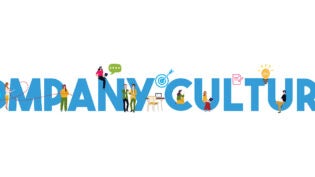Iron Man is a fictional superhero.
A.G. Lafley, the former chairman and CEO of P&G, is a real one. He took a proverbial slumbering consumer products giant and turned it into a company that delivered $100 million worth of new products to market, quarter after quarter after quarter.
Many people attribute making open innovation work at P&G—the idea that a company can and should use external ideas as well as internal ideas as it goes about trying to create new products or services—as the key to his success. That’s certainly true, but what he did is more nuanced than that.
As CEO, Lafley directed R&D leaders that half of their future ideas had to come through their departments, not from their departments; in other words, stop inventing and start treasure hunting.
This is where most will tell you about how asking his R&D group to seek new solutions from consumers resulted in better ideas, more profit, and less cost. They will talk about innovation dashboards and how what gets measured gets done. They may even talk about how your expertise gets in your way, as we have talked about before. All true.
What’s often overlooked is what Lafley did NOT do. Specifically, he didn’t cut his really smart researchers out of the process. He did not go on an idea treasure hunt that didn’t include his R&D team. He didn’t just go use a software package to find ideas that his stubborn researchers would never consider. Instead, he enrolled his smartest people to be part of a better solution.
Lafley understood what too many of us don’t: People support what they create.
From Edison to Jobs to Winfrey, pioneering innovators know how to enroll a team that creates and then supports big ideas. They have learned to create organizations that literally pull great ideas through the ranks instead of empowering people to straight-arm them.
Here are three ways you can do the same.
1) Set the Context
The leader’s No. 1 job is to establish context. This means we must frame how we want others to interpret what is happening. What is the outcome we are trying to achieve together? What stands in our way? What specific roles do each of us play in achieving the outcome?
2) Orchestrate the Experience
It’s time to lose the suit, the tie, and the beige hotel conference room. Great leaders structure how, when, and why we gather. They know that when it comes to innovation, every meeting and every experience helps set an example of the culture we want. What kind of meeting will build more openness, more creativity, and a sense of community?
3) Shape the Conversation
Communication is leadership. The most successful leaders help shape a shared language and practice generative conversations. They understand that transformation is first and foremost a linguistic endeavor driven by dropping the slide shows and truly engaging. They are raw and fearless with their own communication first, which opens the door for others to follow suit.
The fish stinks from the head down. Great cultures start with leaders courageous enough to enroll their people first and change the future second.













